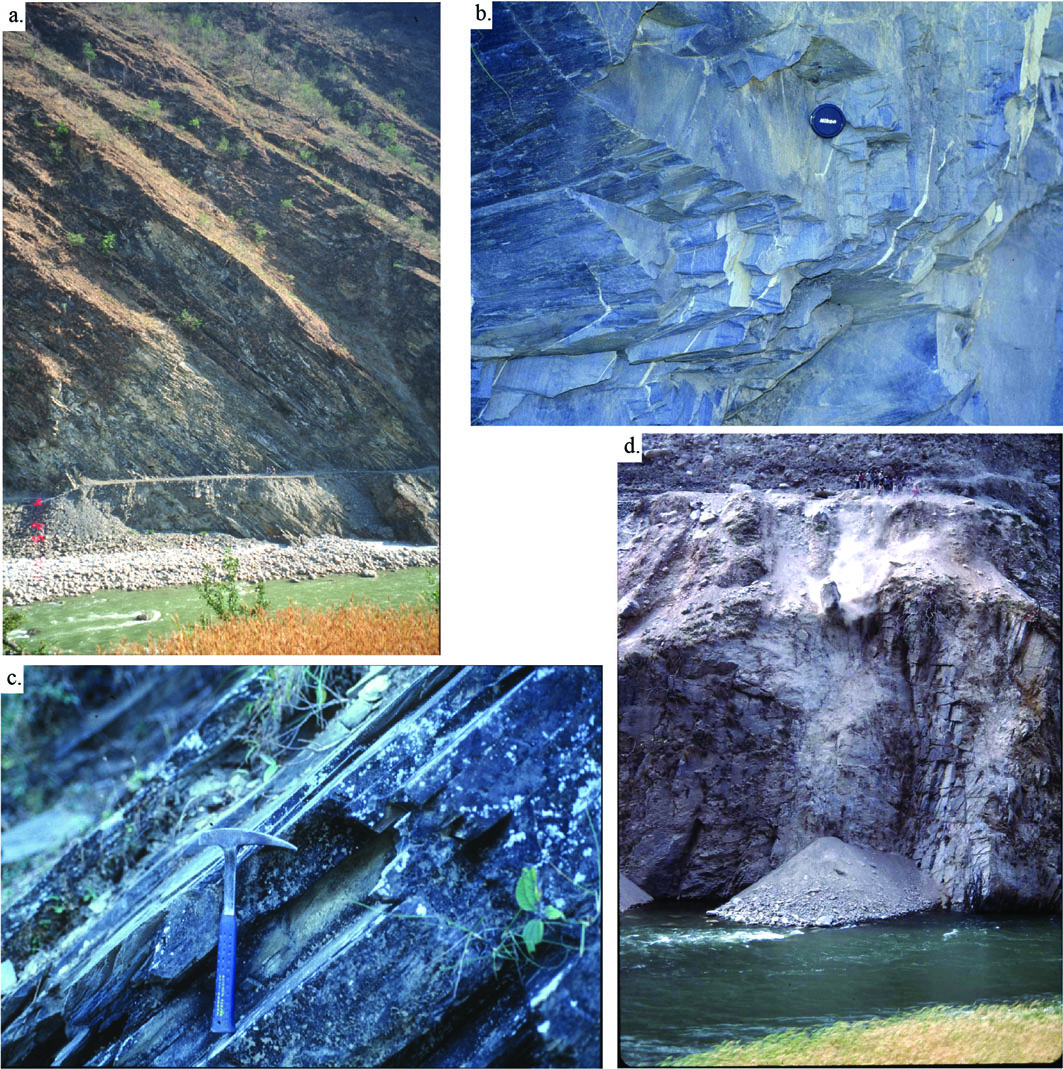DAY 7. Lesser Himalayan Duplex
This section of the Seti River has the entire Lakharpata Group exposed. East of Malumela, you will encounter the Benighat Formation in a narrow gorge (Figs. 10a, 10b, 10c) (N29º30’12.8; E81º07’19.0”; 1195±116 m). After the black slates of the Benighat, the Lakharpata Group carbonates are again encountered (Fig. 10d) and deformation increases northeastward up the Seti River toward Chainpur. The amount of purple quartzite and green stretched pebble conglomerate float increases as the stratigraphy transitions down into the Syangia Formation marked by red and green shale (N29º31’00.2; E81º09’33.0”; 1157±46 m). After the Syangia Formation, you will hike into the Ranimata Formation. This is a thrust sheet in the northern part of the LH duplex; however, the boundary is complicated by structure and is now a normal fault (see Robinson et al., 2006 for a complete explanation and Figure 3b for the cross section). Hike to Chainpur in the Ranimata Formation.
Spend the night in Chainpur. Camping is possible in the school yard (Camp 7 on Fig. 2).
Figure 10. Benighat Slate and Lakharparta Group

(a) Gorge in the Seti River composed of Benighat Slate in the middle of the Lakharpata Group (N29°34’45.6”; E80°14’ 4.5”; 1310±150m). Trail by Seti River for scale. (b) Benighat Slate, 5 cm lens cap for scale. (c) Benighat Slate, 0.3 m rock hammer for scale. (d) Lakharparta Group south of Chainpur. Road workers dislodged the tumbling giant boulder that is plumeting toward the Seti River.